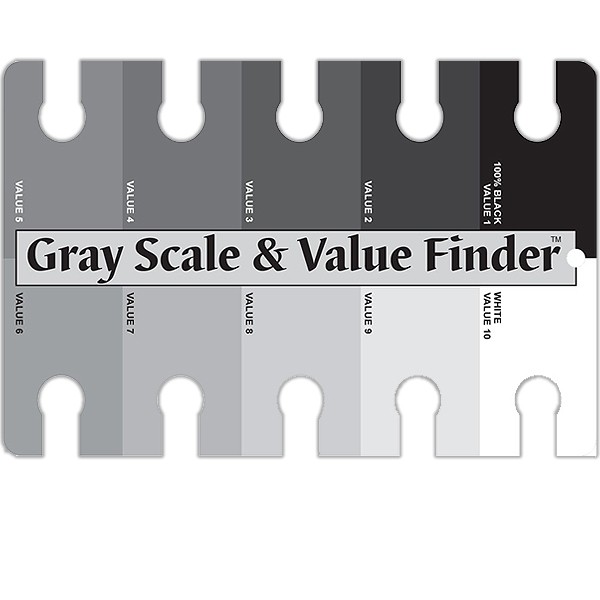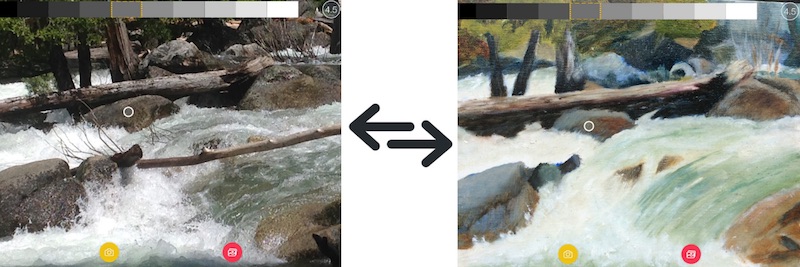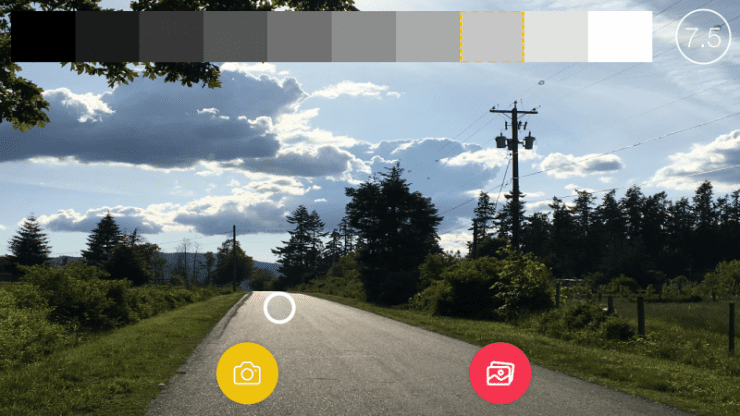Value Finder
A value finder is a tool to help you find the value (lightness or darkness) of a part of a scene you are painting.
This is a commercial product called a Gray Scale And Value Finder by ColorWheel. It has holes cut out of it to let you more easily compare it to a value in a scene. To check the value you will have to squint so you see things in black and white. This particular value finder covers ten values from 100% to 10% black.
The size is 4×6″ (10 cm × 15 cm)

Phone app: 1 Touch Value Finder
If you need to check the values in your painting against a scene, you can also use an app called 1 Touch Value Finder.

1 Touch Value Finder is an app you can use to take a photo of a scene and your painting and check the value of shapes on each. If they are the same you know you got the value right.
How to check the values in your painting
Step 1: Touch any part of the image that you want to paint and instantly get a reading for that value.
Step 2: Touch an image of the paint you are using or the paint you applied to your canvas and again get an instant reading of the value you have created.
Step 3: Swipe left and right between 2 images. This lets you easily compare a reference image to your sketch, or to the colors you have mixed on your palette. If the values of the corresponding areas don’t match, then re-mix your color to get the value closer to your reference value.
The app
This is the app. It is available for IOS and Android.
https://1-touchvaluefinder.com/ (takes a long time to load)
Cautions
Don’t rely blindly on the 1 touch value finder app. Things are not always that easy in painting! There is a potential problem, and it depends on the lighting situation. There is a problem in photography called dynamic range. Put simply, the camera cannot capture all the range of values from light to dark that you see in nature. This means that some areas of the image can be over exposed (too light), and other areas might be under exposed (too dark). If this happens, the values in your painting with be wrong.
For more information on the Dynamic Range problem, see the Lesson AD106 Dynamic Range in the Virtual Art Academy program.

Add comment